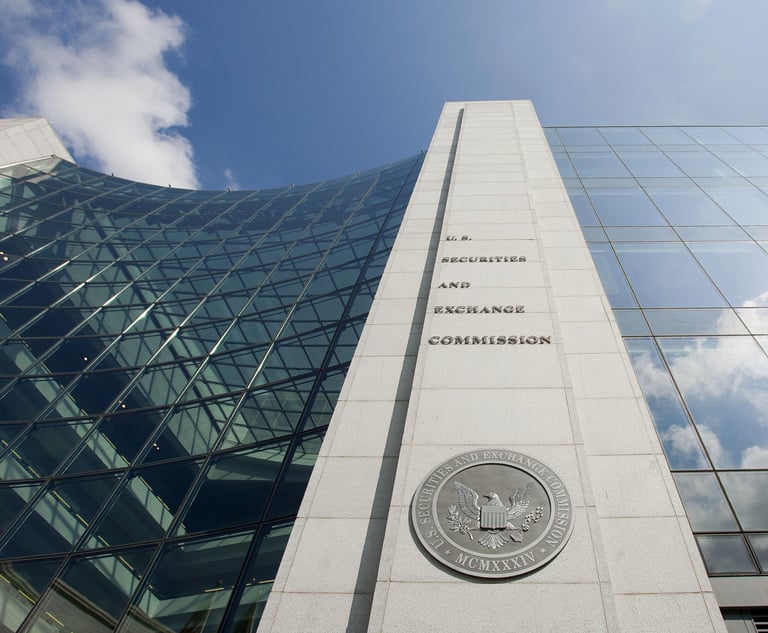Compliance and the cloud come face-to-face in battle
While the cloud allows businesses to become more agile, compliance restrains it, which is preventing some businesses from taking full advantage of what the cloud can do.
March 20, 2014 at 08:03 AM
5 minute read
The original version of this story was published on Law.com
Around the world, cloud computing and compliance regulation are having a major effect on businesses. Not only are they transforming operations, but they are also having an effect on an increase in cyber threats, which is causing headaches for IT professionals.
“Too many are trying to apply risk procedures, controls and regulations to a cloud business model, which they don't truly understand,” Garry Sidaway, global director of security strategy, NTT Com Security, told Information Age.
While the cloud allows businesses to become more agile, compliance restrains it, which is preventing some businesses from taking full advantage of what the cloud can do. According to NTT Com Security research, businesses are apprehensive of using the cloud. Interestingly, a whopping 86 percent say their issues around data protection, legislation, and regulation are responsible for cloud computing being adopted slowly.
With increasingly complicated data laws from NSA and PRISM revelations and compliance, it's becoming a minefield for businesses looking to use the cloud. These days, we typically use compliance to improve business and corporate governance. This helps improve approaches to risk management, enabling businesses to understand risks of using the cloud and what processes they have in place to protect themselves.
But, something needs to change, according to Sidaway. Compliance should, instead, look forward and work with businesses and governments. In this age of the cloud, IT professionals face an overwhelming amount of laws including the ICO's guidelines putting the security responsibility on the business owning the data, instead of the third party cloud provider.
Further, some organizations are making big assumptions about the skills required to develop and deliver secure cloud services. In addition, too many are trying to apply risk procedures and regulations to a cloud business model, which they don't fully understand. They apply old compliance methodologies to new business models, to decide that they can't use the cloud effectively because of compliance.
Instead, they should get a better understanding the cloud before applying these controls. IT professionals that do understand the right way to merge the cloud and compliance see good cloud skills as the priority.
With the right knowledge, businesses can then explore the technology of the cloud and how it can improve their operation, as well as apply the controls to manage risk.
For more news on the cloud and compliance, check out these articles:
Around the world, cloud computing and compliance regulation are having a major effect on businesses. Not only are they transforming operations, but they are also having an effect on an increase in cyber threats, which is causing headaches for IT professionals.
“Too many are trying to apply risk procedures, controls and regulations to a cloud business model, which they don't truly understand,” Garry Sidaway, global director of security strategy, NTT Com Security, told Information Age.
While the cloud allows businesses to become more agile, compliance restrains it, which is preventing some businesses from taking full advantage of what the cloud can do. According to NTT Com Security research, businesses are apprehensive of using the cloud. Interestingly, a whopping 86 percent say their issues around data protection, legislation, and regulation are responsible for cloud computing being adopted slowly.
With increasingly complicated data laws from NSA and PRISM revelations and compliance, it's becoming a minefield for businesses looking to use the cloud. These days, we typically use compliance to improve business and corporate governance. This helps improve approaches to risk management, enabling businesses to understand risks of using the cloud and what processes they have in place to protect themselves.
But, something needs to change, according to Sidaway. Compliance should, instead, look forward and work with businesses and governments. In this age of the cloud, IT professionals face an overwhelming amount of laws including the ICO's guidelines putting the security responsibility on the business owning the data, instead of the third party cloud provider.
Further, some organizations are making big assumptions about the skills required to develop and deliver secure cloud services. In addition, too many are trying to apply risk procedures and regulations to a cloud business model, which they don't fully understand. They apply old compliance methodologies to new business models, to decide that they can't use the cloud effectively because of compliance.
Instead, they should get a better understanding the cloud before applying these controls. IT professionals that do understand the right way to merge the cloud and compliance see good cloud skills as the priority.
With the right knowledge, businesses can then explore the technology of the cloud and how it can improve their operation, as well as apply the controls to manage risk.
For more news on the cloud and compliance, check out these articles:
This content has been archived. It is available through our partners, LexisNexis® and Bloomberg Law.
To view this content, please continue to their sites.
Not a Lexis Subscriber?
Subscribe Now
Not a Bloomberg Law Subscriber?
Subscribe Now
NOT FOR REPRINT
© 2024 ALM Global, LLC, All Rights Reserved. Request academic re-use from www.copyright.com. All other uses, submit a request to [email protected]. For more information visit Asset & Logo Licensing.
You Might Like
View All
SEC Penalizes Wells Fargo, LPL Financial $900,000 Each for Inaccurate Trading Data

US Reviewer of Foreign Transactions Sees More Political, Policy Influence, Say Observers

Pre-Internet High Court Ruling Hobbling Efforts to Keep Tech Giants from Using Below-Cost Pricing to Bury Rivals
6 minute read
Preparing for 2025: Anticipated Policy Changes Affecting U.S. Businesses Under the Trump Administration
Trending Stories
- 1Tuesday Newspaper
- 2Judicial Ethics Opinion 24-85
- 3Decision of the Day: Administrative Court Finds Prevailing Wage Law Applies to Workers Who Cleaned NYC Subways During Pandemic
- 4Trailblazing Broward Judge Retires; Legacy Includes Bush v. Gore
- 5Federal Judge Named in Lawsuit Over Underage Drinking Party at His California Home
Who Got The Work
Michael G. Bongiorno, Andrew Scott Dulberg and Elizabeth E. Driscoll from Wilmer Cutler Pickering Hale and Dorr have stepped in to represent Symbotic Inc., an A.I.-enabled technology platform that focuses on increasing supply chain efficiency, and other defendants in a pending shareholder derivative lawsuit. The case, filed Oct. 2 in Massachusetts District Court by the Brown Law Firm on behalf of Stephen Austen, accuses certain officers and directors of misleading investors in regard to Symbotic's potential for margin growth by failing to disclose that the company was not equipped to timely deploy its systems or manage expenses through project delays. The case, assigned to U.S. District Judge Nathaniel M. Gorton, is 1:24-cv-12522, Austen v. Cohen et al.
Who Got The Work
Edmund Polubinski and Marie Killmond of Davis Polk & Wardwell have entered appearances for data platform software development company MongoDB and other defendants in a pending shareholder derivative lawsuit. The action, filed Oct. 7 in New York Southern District Court by the Brown Law Firm, accuses the company's directors and/or officers of falsely expressing confidence in the company’s restructuring of its sales incentive plan and downplaying the severity of decreases in its upfront commitments. The case is 1:24-cv-07594, Roy v. Ittycheria et al.
Who Got The Work
Amy O. Bruchs and Kurt F. Ellison of Michael Best & Friedrich have entered appearances for Epic Systems Corp. in a pending employment discrimination lawsuit. The suit was filed Sept. 7 in Wisconsin Western District Court by Levine Eisberner LLC and Siri & Glimstad on behalf of a project manager who claims that he was wrongfully terminated after applying for a religious exemption to the defendant's COVID-19 vaccine mandate. The case, assigned to U.S. Magistrate Judge Anita Marie Boor, is 3:24-cv-00630, Secker, Nathan v. Epic Systems Corporation.
Who Got The Work
David X. Sullivan, Thomas J. Finn and Gregory A. Hall from McCarter & English have entered appearances for Sunrun Installation Services in a pending civil rights lawsuit. The complaint was filed Sept. 4 in Connecticut District Court by attorney Robert M. Berke on behalf of former employee George Edward Steins, who was arrested and charged with employing an unregistered home improvement salesperson. The complaint alleges that had Sunrun informed the Connecticut Department of Consumer Protection that the plaintiff's employment had ended in 2017 and that he no longer held Sunrun's home improvement contractor license, he would not have been hit with charges, which were dismissed in May 2024. The case, assigned to U.S. District Judge Jeffrey A. Meyer, is 3:24-cv-01423, Steins v. Sunrun, Inc. et al.
Who Got The Work
Greenberg Traurig shareholder Joshua L. Raskin has entered an appearance for boohoo.com UK Ltd. in a pending patent infringement lawsuit. The suit, filed Sept. 3 in Texas Eastern District Court by Rozier Hardt McDonough on behalf of Alto Dynamics, asserts five patents related to an online shopping platform. The case, assigned to U.S. District Judge Rodney Gilstrap, is 2:24-cv-00719, Alto Dynamics, LLC v. boohoo.com UK Limited.
Featured Firms
Law Offices of Gary Martin Hays & Associates, P.C.
(470) 294-1674
Law Offices of Mark E. Salomone
(857) 444-6468
Smith & Hassler
(713) 739-1250






